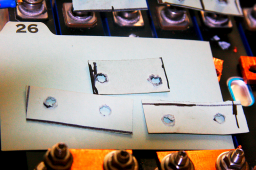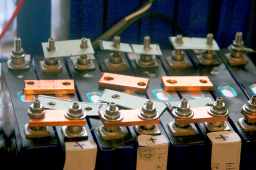Forgive what I’m sure is the umpteenth time this has been asked but I’m so back and forth I need some definitive guidance.
my cells came slightly bulged so I’m immediately cautious about the strain on the terminals. I started with 1/4” copper and making my own busbars. I wouldn’t call it a total loss but the length of my welded studs doesn’t leave enough grab for the bolts for my liking. Not to mention trying to line up the terminal holes is extremely challenging with the varying extent of bulge from cell to cell.
My next thought was making up some 4/0 jumpers. I just received the lugs this morning. This is the first time I’ve held them, wow they’re big! I’m sure I can make it work but seems like this will add a lot of bulk to the pack.
So I’m back on the fence. I’ll make up a couple of jumpers to test but also wondering if there is a source for heavier busbars that is recommended. The busbars that come with the cells don’t give me confidence.
Thanks!
my cells came slightly bulged so I’m immediately cautious about the strain on the terminals. I started with 1/4” copper and making my own busbars. I wouldn’t call it a total loss but the length of my welded studs doesn’t leave enough grab for the bolts for my liking. Not to mention trying to line up the terminal holes is extremely challenging with the varying extent of bulge from cell to cell.
My next thought was making up some 4/0 jumpers. I just received the lugs this morning. This is the first time I’ve held them, wow they’re big! I’m sure I can make it work but seems like this will add a lot of bulk to the pack.
So I’m back on the fence. I’ll make up a couple of jumpers to test but also wondering if there is a source for heavier busbars that is recommended. The busbars that come with the cells don’t give me confidence.
Thanks!






